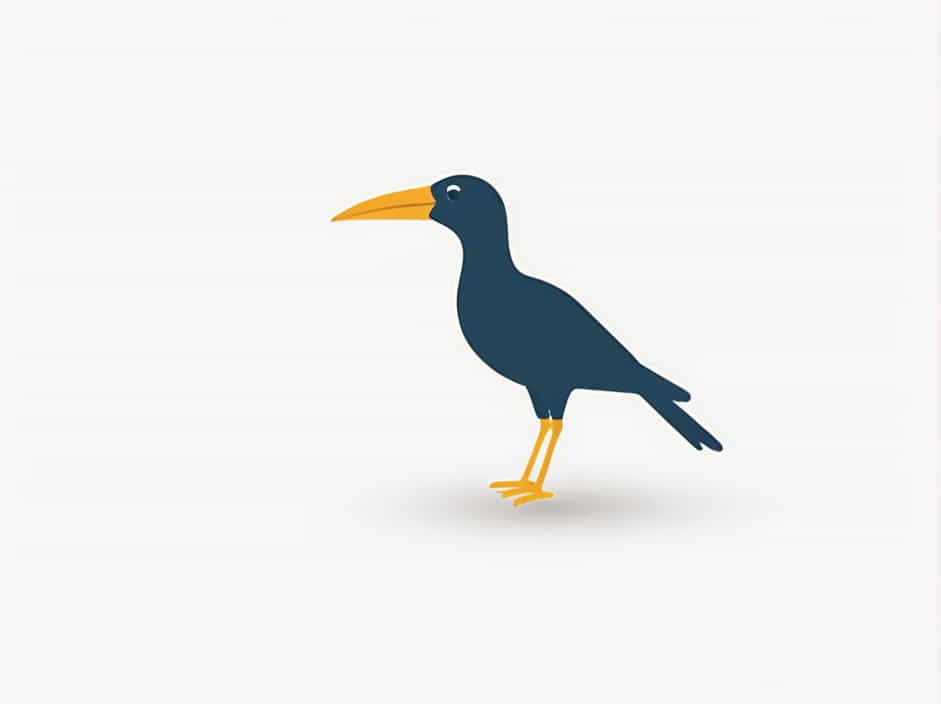Birds with long beaks have evolved to adapt to different environments, allowing them to access food that other birds cannot reach. These birds use their elongated beaks for various purposes, such as catching fish, extracting nectar, probing mud, or even breaking open hard shells.
This topic explores some well-known birds with long beaks, their unique adaptations, and how they use their beaks for survival.
1. The Sword-billed Hummingbird (Ensifera ensifera)
A Bird with a Beak Longer Than Its Body
The sword-billed hummingbird is one of the most fascinating birds with a long beak. It holds the record for having the longest beak relative to body size of any bird in the world.
Physical Characteristics
- Beak Length: Can be longer than the bird’s entire body.
- Size: Around 13-14 cm in body length.
- Color: A mix of green and bronze, with a shimmering effect.
Why Does It Have Such a Long Beak?
The sword-billed hummingbird has evolved its beak to feed on deep flowers that other hummingbirds cannot reach. It plays a crucial role in pollination, helping flowers that require a specialized pollinator.
Habitat and Distribution
This bird is found in the Andean regions of South America, including Colombia, Ecuador, Peru, and Bolivia. It prefers high-altitude cloud forests.
2. The Pelican (Pelecanus spp.)
A Large Water Bird with an Enormous Beak
Pelicans are one of the most recognizable birds with long beaks, especially because of their large throat pouch, which helps them catch fish.
Physical Characteristics
- Beak Length: Can reach up to 45 cm.
- Size: Large, with a wingspan of 2.5-3.5 meters.
- Weight: Varies by species but can weigh over 10 kg.
How Do Pelicans Use Their Long Beaks?
Pelicans use their beaks to scoop up fish from the water. They do not store food in their pouch; instead, they drain out the water before swallowing their catch whole.
Habitat and Distribution
Pelicans are found worldwide near coasts, lakes, and rivers. Some common species include the American white pelican, brown pelican, and great white pelican.
3. The Toucan (Ramphastidae family)
A Brightly Colored Bird with a Giant Beak
Toucans are famous for their large, colorful beaks, which make them one of the most unique birds in the world.
Physical Characteristics
- Beak Length: Can be up to 20 cm long.
- Size: Varies by species, but generally 30-60 cm in total length.
- Color: Usually black with a bright yellow, orange, or red beak.
Why Do Toucans Have Large Beaks?
Toucans use their beaks for:
- Reaching fruit on branches that would otherwise be difficult to access.
- Thermoregulation, as their beaks help regulate body temperature.
- Attracting mates, as a bright beak signals health and strength.
Habitat and Distribution
Toucans are native to rainforests in Central and South America, particularly in the Amazon basin.
4. The Long-billed Curlew (Numenius americanus)
A Shorebird with a Downward-Curved Beak
The long-billed curlew is a wading bird known for its extremely long, curved beak, which helps it probe into mud and sand for food.
Physical Characteristics
- Beak Length: Can reach up to 20 cm.
- Size: About 50-65 cm in length.
- Weight: Around 500-900 grams.
How Does It Use Its Beak?
The curlew’s beak is perfectly designed for digging deep into wet sand and mud to find insects, worms, and small crustaceans.
Habitat and Distribution
This bird is commonly found in grasslands and coastal areas of North America. During migration, it can be seen along coastal wetlands, estuaries, and mudflats.
5. The Shoebill (Balaeniceps rex)
A Large, Stork-like Bird with a Massive Beak
The shoebill, sometimes called the whale-headed stork, has a long and uniquely shaped beak that resembles a shoe.
Physical Characteristics
- Beak Length: Up to 24 cm.
- Size: Can grow up to 1.5 meters tall.
- Weight: Around 4-7 kg.
How Does It Use Its Beak?
The shoebill’s beak is strong and designed for hunting large fish, frogs, and even small crocodiles. It uses a powerful clamping motion to catch prey in swampy environments.
Habitat and Distribution
Shoebills are found in wetlands and swamps of central Africa, particularly in Uganda, Sudan, and the Congo Basin.
The Importance of Beak Adaptations in Birds
1. Feeding Adaptations
Birds with long beaks have evolved specific adaptations based on their diet:
- Nectar feeders (hummingbirds) have long, thin beaks.
- Fish eaters (pelicans, shoebills) have large, scoop-like beaks.
- Mud probers (curlews) have curved beaks for digging.
- Fruit eaters (toucans) have strong beaks for breaking fruit.
2. Survival Advantages
A long beak allows birds to access food sources that others cannot, giving them a competitive edge in their habitat.
3. Communication and Mating
In some species, the size and color of the beak play a role in attracting mates. A larger, more colorful beak can indicate a healthier bird.
Birds with long beaks come in a variety of shapes and sizes, each uniquely adapted to their environment. From the sword-billed hummingbird, whose beak is longer than its body, to the massive-beaked shoebill, these birds have evolved to use their beaks for feeding, survival, and communication.
Their specialized adaptations highlight the incredible diversity of nature and the importance of evolutionary traits in ensuring species thrive in different ecosystems.
